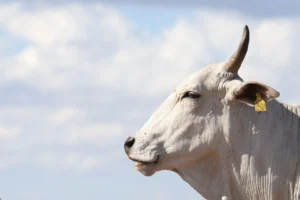
Can COP30 change the future of cows and climate in Brazil?
At COP30, the world’s eyes are on Brazil, and the cattle ranchers leading a global transformation.
Cows account for around 5–7% of global greenhouse gas emissions, according to the Intergovernmental Panel on Climate Change. And reducing beef and dairy production isn’t the answer, because in the next 30 years, we’ll need to feed 10 billion people — that’s 70% more food than we produce today.
Farmers have a lot on their plates: more people to feed, more unpredictable weather, more supply-chain disruptions and more responsibility to lower their impact on the environment. The question isn’t whether to change, but how to adapt while keeping farms profitable and productive.
For cattle producers, this means rethinking how their herds interact with the land. Rotational grazing — also referred to as adaptive multi-paddock (AMP) grazing — is a regenerative farming practice that allows farmers to manage their herds in a way that supports their cows, soils and long-term sustainability.
Instead of putting cows into the same pasture for grazing day after day, rotational grazing involves moving them strategically between different pastures. This isn’t a new idea — it mirrors the way wild herds, like bison, have historically moved across landscapes.
When cows graze in one area and then move on, pastures can rest and regenerate. In fact, the act of grazing enables plant roots to grow back even stronger than before. However, if cows remain in the same area for too long, overgrazing occurs, and the plants cannot regenerate.
Overgrazed land leads to soil erosion, decreased forage quality, reduced biodiversity and other ecological problems. It was a major factor in the conditions that led to the Dust Bowl, one of the most significant and long-lasting environmental disasters in U.S. history.
In contrast, rotational grazing supports healthier soil and plants, captures up to four times more carbon than continuous grazing, and reduces methane emissions from cows by up to 10%.
One example of rotational grazing in action is Archbold’s 10,500-acre Buck Island Ranch, a working cattle ranch in Florida that has integrated the practice as part of its broader sustainability efforts. Through research, rotational grazing and other regenerative farming practices, Buck Island Ranch has improved its soil health and reduced its emissions — and can now sequester, on average, more carbon than it emits each year.
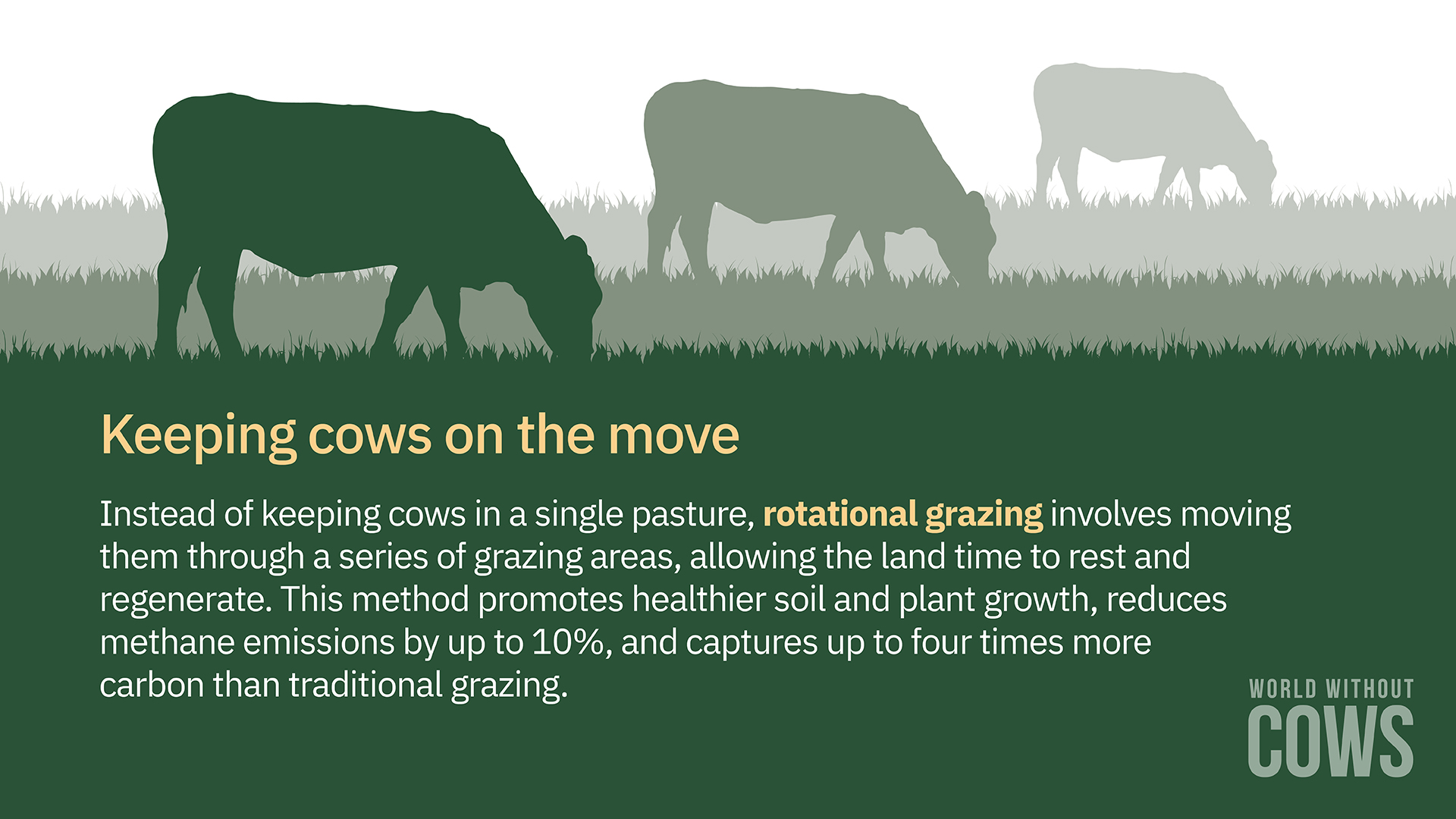
According to the U.S. Department of Agriculture Climate Hub, rotational grazing has many potential environmental and economic benefits.
For the land:
For the farmers:
For the animals:
While rotational grazing has many advantages, some challenges can also arise.
For farmers considering rotational grazing, resources are available through local extension offices, conservation districts and experienced graziers who can provide guidance and share their experiences.
With proper planning and management, rotational grazing can work for operations of all sizes — from large-scale ranches to small family farms. No single approach works for every farm, but rotational grazing is one of the most adaptable and scalable strategies available.
By rethinking how cows interact with the land, farmers can improve their soil health, boost their productivity and become part of the climate solution.
Ready to start a conversation about cows? Connect with us on social media (@worldwithoutcows) and let us know your thoughts.

At COP30, the world’s eyes are on Brazil, and the cattle ranchers leading a global transformation.
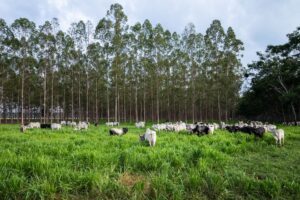
Restoring 40 million hectares of pasture could feed billions and ease pressure on the Amazon. Is the world paying attention?
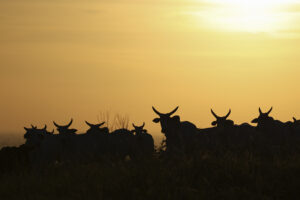
New mini-doc explores deforestation, food security and the Brazilian cattle sector’s path to a more sustainable future
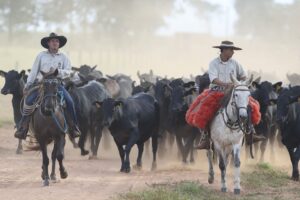
Mention Brazilian beef, and you’re likely to spark discussion about familiar themes: deforestation, emissions and blame. What do we find when we dig deeper? Here are the answers to five top questions about Brazil’s role in protecting the Amazon and feeding the world.
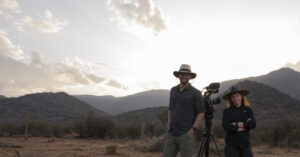
From science to the big screen: Discover how a single question grew into a global journey.
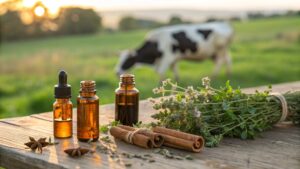
The role of essential oils like thyme, oregano and clove in reducing methane emissions from cattle.
As climate change intensifies and the world’s population continues to grow, the pressure on our global food production system mounts. You can play an active role in shaping a more sustainable planet for future generations. Fill out the form below to learn more about how you can partner with us.
Receive notifications about the release date, new online content and how you can get involved